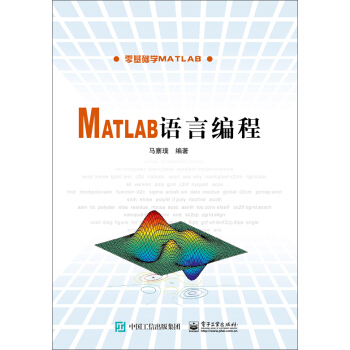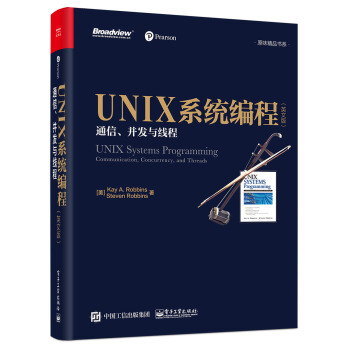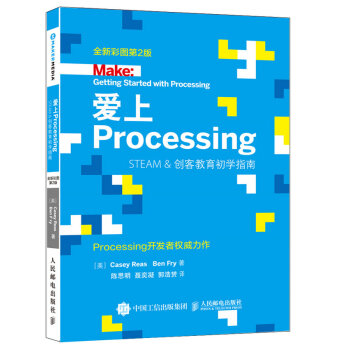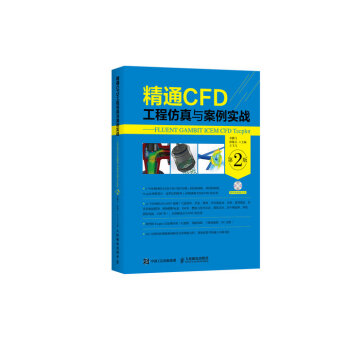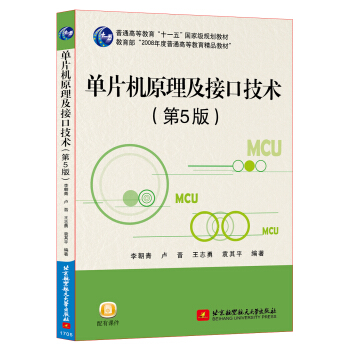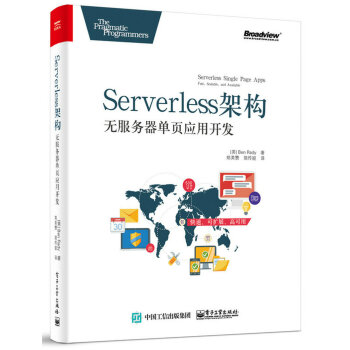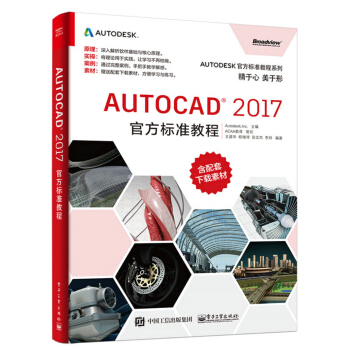

具体描述
产品特色
编辑推荐
适读人群 :C语言编程人员及爱好者本书将向你讲解如何使用C程序设计语言来编写程序。无论是刚入门的初级程序员,还是经验丰富的资深程序员,都可以在本书的帮助下彻底理解这门语言,它是许多面向对象程序设计语言(比如C++、Objective-C、C#和Java)的基础。
本书通过示例来教授C语言,每个新概念都有完整的C程序做演示。Stephen Kochan逐步解释了所有C函数。你不仅可以学习这门语言的基础知识,还能养成良好的程序设计习惯。每章最后的习题使本书非常适于课堂学习或自学。
本书涵盖了C语言的所有特性,包括C11标准中新增的内容。附录中详尽总结了C语言和C语言库,两者的组织形式都便于快速参考。
内容简介
《C语言程序设计(第4版)英文版》全面介绍了C语言的各种特性,包括C11中增加的内容。《C语言程序设计(第4版)英文版》中包含大量完整的示例及详细的讲解。附录中详尽总结了C语言和C语言库,两者的组织形式都便于快速参考。《C语言程序设计(第4版)英文版》通过示例来教授C语言,每个新概念都有完整的C程序做演示。你不仅可以学习这门语言的基础知识,还能养成良好的程序设计习惯。另外,每章最后附有习题,便于课堂学习或自学。
无论是否拥有编程经验,你都可以通过本书透彻地理解C语言。
作者简介
Stephen G. Kochan,撰写及合作撰写了六本经典的程序设计与Unix书籍,包括Unix Shell Programming和Programming in Objective-C。他曾任AT&T;贝尔实验室的软件顾问,从事Unix和C程序设计的开发与授课工作。精彩书评
对于任何开始学习使用C语言编写程序的人来说,这本书都是极好的。这是一本优秀的入门教科书,拥有丰富的示例、出色的文字……我就是用这本书来学习C语言的——这是一本超棒的书。——Vinit S. Carpenter,Learn C/C++ Today
目录
Introduction
1 Some Fundamentals
Programming
Higher-Level Languages
Operating Systems
Compiling Programs
Integrated Development Environments
Language Interpreters
2 Compiling and Running Your First Program
Compiling Your Program
Running Your Program
Understanding Your First Program
Displaying the Values of Variables
Comments
Exercises
3 Variables, Data Types, and Arithmetic Expressions
Understanding Data Types and Constants
The Integer Type int
The Floating Number Type float
The Extended Precision Type double
The Single Character Type char
The Boolean Data Type _Bool
Type Specifiers: long , long long , short , unsigned , and signed
Working with Variables
Working with Arithmetic Expressions
Integer Arithmetic and the Unary Minus Operator
Combining Operations with Assignment: The Assignment Operators
Types _Complex and _Imaginary
Exercises
4 Program Looping
Triangular Numbers
The for Statement
Relational Operators
Aligning Output
Program Input
Nested for Loops
for Loop Variants
The while Statement
The do Statement
The break Statement
The continue Statement
Exercises
5 Making Decisions
The if Statement
The if-else Construct
Compound Relational Tests
Nested if Statements
The else if Construct
The switch Statement
Boolean Variables
The Conditional Operator
Exercises
6 Working with Arrays
Defining an Array
Using Array Elements as Counters
Generating Fibonacci Numbers
Using an Array to Generate Prime Numbers
Initializing Arrays
Character Arrays
Base Conversion Using Arrays
The const Qualifier
Multidimensional Arrays
Variable Length Arrays
Exercises
7 Working with Functions
Defining a Function
Arguments and Local Variables
Function Prototype Declaration
Automatic Local Variables
Returning Function Results
Functions Calling Functions Calling...
Declaring Return Types and Argument Types
Checking Function Arguments
Top-Down Programming
Functions and Arrays
Assignment Operators
Sorting Arrays
Multidimensional Arrays
Global Variables
Automatic and Static Variables
Recursive Functions
Exercises
8 Working with Structures
The Basics of Structures
A Structure for Storing the Date
Using Structures in Expressions
Functions and Structures
A Structure for Storing the Time
Initializing Structures
Compound Literals
Arrays of Structures
Structures Containing Structures
Structures Containing Arrays
Structure Variants
Exercises
9 Character Strings
Revisiting the Basics of Strings
Arrays of Characters
Variable-Length Character Strings
Initializing and Displaying Character Strings
Testing Two Character Strings for Equality
Inputting Character Strings
Single-Character Input
The Null String
Escape Characters
More on Constant Strings
Character Strings, Structures, and Arrays
A Better Search Method
Character Operations
Exercises
10 Pointers
Pointers and Indirection
Defining a Pointer Variable
Using Pointers in Expressions
Working with Pointers and Structures
Structures Containing Pointers
Linked Lists
The Keyword const and Pointers
Pointers and Functions
Pointers and Arrays
A Slight Digression About Program Optimization
Is It an Array or Is It a Pointer?
Pointers to Character Strings
Constant Character Strings and Pointers
The Increment and Decrement Operators Revisited
Operations on Pointers
Pointers to Functions
Pointers and Memory Addresses
Exercises
11 Operations on Bits
The Basics of Bits
Bit Operators
The Bitwise AND Operator
The Bitwise Inclusive-OR Operator
The Bitwise Exclusive-OR Operator
The Ones Complement Operator
The Left Shift Operator
The Right Shift Operator
A Shift Function
Rotating Bits
Bit Fields
Exercises
12 The Preprocessor
The #define Statement
Program Extendability
Program Portability
More Advanced Types of Definitions
The # Operator
The ## Operator
The #include Statement
System Include Files
Conditional Compilation
The #ifdef, #endif, #else, and #ifndef Statements
The #if and #elif Preprocessor Statements
The #undef Statement
Exercises
13 Extending Data Types with the Enumerated Data Type, Type Definitions, and Data Type Conversions
Enumerated Data Types
The typedef Statement
Data Type Conversions
Sign Extension
Argument Conversion
Exercises
14 Working with Larger Programs
Dividing Your Program into Multiple Files
Compiling Multiple Source Files from the Command Line
Communication Between Modules
External Variables
Static Versus Extern Variables and Functions
Using Header Files Effectively
Other Utilities for Working with Larger Programs
The make Utility
The cvs Utility
Unix Utilities: ar, grep, sed, and so on
15 Input and Output Operations in C
Character I/O: getchar() and putchar()
Formatted I/O: printf() and scanf()
The printf() Function
The scanf() Function
Input and Output Operations with Files
Redirecting I/O to a File
End of File
Special Functions for Working with Files
The fopen Function
The getc() and putc() Functions
The fclose() Function
The feof Function
The fprintf() and fscanf() Functions
The fgets() and fputs() Functions
stdin, stdout, and stderr
The exit() Function
Renaming and Removing Files
Exercises
16 Miscellaneous and Advanced Features
Miscellaneous Language Statements
The goto Statement
The null Statement
Working with Unions
The Comma Operator
Type Qualifiers
The register Qualifier
The volatile Qualifier
The restrict Qualifier
Command-line Arguments
Dynamic Memory Allocation
The calloc() and malloc() Functions
The sizeof Operator
The free Function
Exercises
17 Debugging Programs
Debugging with the Preprocessor
Debugging Programs with gdb
Working with Variables
Source File Display
Controlling Program Execution
Getting a Stack Trace
Calling Functions and Setting Arrays and Structures
Getting Help with gdb Commands
Odds and Ends
18 Object-Oriented Programming
What Is an Object Anyway?
Instances and Methods
Writing a C Program to Work with Fractions
Defining an Objective-C Class to Work with Fractions
Defining a C++ Class to Work with Fractions
Defining a C# Class to Work with Fractions
A C Language Summary
1.0 Digraphs and Identifiers
2.0 Comments
3.0 Constants
4.0 Data Types and Declarations
5.0 Expressions
6.0 Storage Classes and Scope
7.0 Functions
8.0 Statements
9.0 The Preprocessor
B The Standard C Library
Standard Header Files
String Functions
Memory Functions
Character Functions
I/O Functions
In-Memory Format Conversion Functions
String-to-Number Conversion
Dynamic Memory Allocation Functions
Math Functions
General Utility Functions
C Compiling Programs with gcc
General Command Format
Command-Line Options
D Common Programming Mistakes
E Resources
The C Programming Language
C Compilers and Integrated Development Environments
Miscellaneous
Index
前言/序言
用户评价
我是一名计算机专业的学生,在学习C语言的过程中,这本书给我带来了巨大的帮助,可以说是贯穿我整个课程的“好战友”。它不仅仅是一本教材,更像是一位经验丰富的老师,能够在我遇到困难的时候及时指点迷津。书中对于一些比较复杂的概念,比如内存管理、文件操作,都做了非常详尽的讲解,并且给出了多种实现方式,让我能够从不同的角度去理解。作者在细节上的处理也做得非常到位,比如对各种错误情况的分析和处理建议,以及对代码效率的考量。我记得有一次我在做一个项目的时候遇到了一个棘手的bug,查阅了很多资料都没找到原因,最后翻到这本书里关于对应模块的章节,才恍然大悟,原来是我对某个细节理解有误。这本书的结构也很合理,章节之间的逻辑联系紧密,能够帮助我建立起一个完整的知识体系。而且,它还包含了很多进阶的内容,让我即使在完成了基础学习之后,也能不断探索和深化。
评分我是一名对编程充满好奇心的非计算机专业的学生,一直在寻找一本能够让我轻松理解C语言的书籍。这本英文原版的C语言教材,完全超出了我的预期。它最吸引我的地方在于,作者非常注重培养读者的“编程思维”,而不仅仅是教授语法规则。书中大量的案例分析,展示了如何将现实世界的问题转化为计算机可以解决的问题,并通过C语言代码实现。这种“从问题到代码”的引导方式,让我觉得编程不再是遥不可及的技能,而是解决实际问题的工具。我尤其喜欢它在讲解函数部分时,强调了“模块化”的思想,这让我意识到,写出清晰、可复用的代码是多么重要。这本书的叙述方式也很严谨,对于一些容易混淆的概念,都会进行细致的辨析,避免让我产生误解。虽然是英文原版,但作者的遣词造句都非常考究,清晰明了,即使是初学者也能逐步适应。
评分作为一名已经工作多年的软件工程师,我一直认为扎实的C语言基础是不可或缺的。在一次偶然的机会,我接触到了这本C语言的英文原版教材,它给我带来了很多惊喜。这本书的讲解方式非常深入,不仅仅停留在语法层面,更注重对C语言底层原理的剖析。作者对计算机体系结构、操作系统等相关知识的引入,让我对C语言的理解上升到了一个新的高度。我尤其赞赏它在讲解数据结构和算法时,与C语言的结合。书中提供的很多代码示例,都充满了实践的智慧,能够直接应用到实际开发中。我尝试着将书中的一些例子移植到我目前的项目中,发现效率得到了显著提升。而且,这本书的篇幅适中,内容精炼,没有多余的废话,每一页都充满了干货。虽然我熟悉C语言,但阅读此书仍然让我收获颇丰,一些我曾经模糊的概念,通过这本书的讲解,变得清晰无比。
评分这本书简直是C语言入门的圣经!我之前尝试过几本其他语言的C书,但都觉得讲得太抽象,或者例子太简单,根本抓不住重点。直到我遇到这本,感觉像是终于找到了灯塔。从最基础的变量、数据类型讲起,每一个概念都用清晰的语言解释,并且配以大量贴合实际的例子,让你能立刻动手实践,加深理解。作者的写作风格非常平易近人,没有那些枯燥的术语堆砌,而是用一种循序渐进的方式引导读者。我尤其喜欢它在讲解指针的部分,真的是我见过最透彻的阐述了,以前一直对指针感到畏惧,读完之后豁然开朗。而且,这本书的排版也很棒,代码块清晰易读,各种图示也很直观,学习起来一点都不费力。虽然是英文原版,但对于我这种有一定英语基础的学习者来说,读起来毫无障碍,反而能体会到原汁原味的C语言表达。总而言之,如果你想真正理解C语言,而不是仅仅记住语法,这本书绝对是你的不二之选。
评分刚开始接触编程,选择一本好的入门书至关重要,而这本C语言的英文版,无疑是我的幸运之选。这本书的语言风格非常幽默风趣,让枯燥的学习过程变得生动有趣。作者善于运用类比和生动的故事来解释抽象的概念,我记得在讲解循环的时候,他用了一个“打地鼠”的游戏来比喻,瞬间就让我理解了循环的逻辑。而且,书中的练习题设计得非常有层次感,从简单的填空题到复杂的编程挑战,能够循序渐进地锻炼我的编程能力。我经常在完成一个章节的学习后,就立刻去做配套的练习题,及时巩固所学知识。这本书还提供了一个在线的代码仓库,里面有书中所有例子的源代码,方便我下载和运行,这对于初学者来说,极大地降低了学习门槛。总的来说,这本书让我对C语言产生了浓厚的兴趣,也为我后续的学习打下了坚实的基础。
评分品相很不好好!!!!!!!!!!!!!!!!!!!!!!!!!!!
评分品相很不好好!!!!!!!!!!!!!!!!!!!!!!!!!!!
评分品相很不好好!!!!!!!!!!!!!!!!!!!!!!!!!!!
评分品相很不好好!!!!!!!!!!!!!!!!!!!!!!!!!!!
评分品相很不好好!!!!!!!!!!!!!!!!!!!!!!!!!!!
评分品相很不好好!!!!!!!!!!!!!!!!!!!!!!!!!!!
评分品相很不好好!!!!!!!!!!!!!!!!!!!!!!!!!!!
评分品相很不好好!!!!!!!!!!!!!!!!!!!!!!!!!!!
评分品相很不好好!!!!!!!!!!!!!!!!!!!!!!!!!!!
相关图书
本站所有内容均为互联网搜索引擎提供的公开搜索信息,本站不存储任何数据与内容,任何内容与数据均与本站无关,如有需要请联系相关搜索引擎包括但不限于百度,google,bing,sogou 等
© 2025 book.coffeedeals.club All Rights Reserved. 静流书站 版权所有



